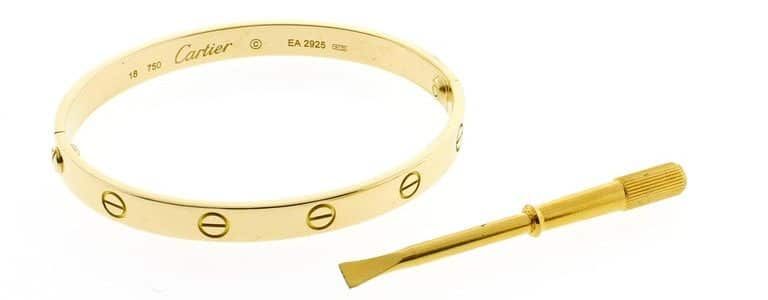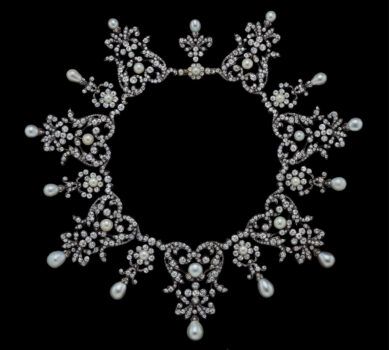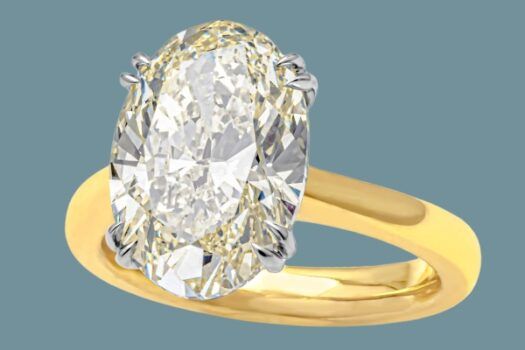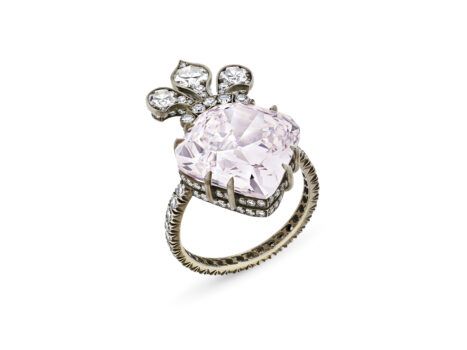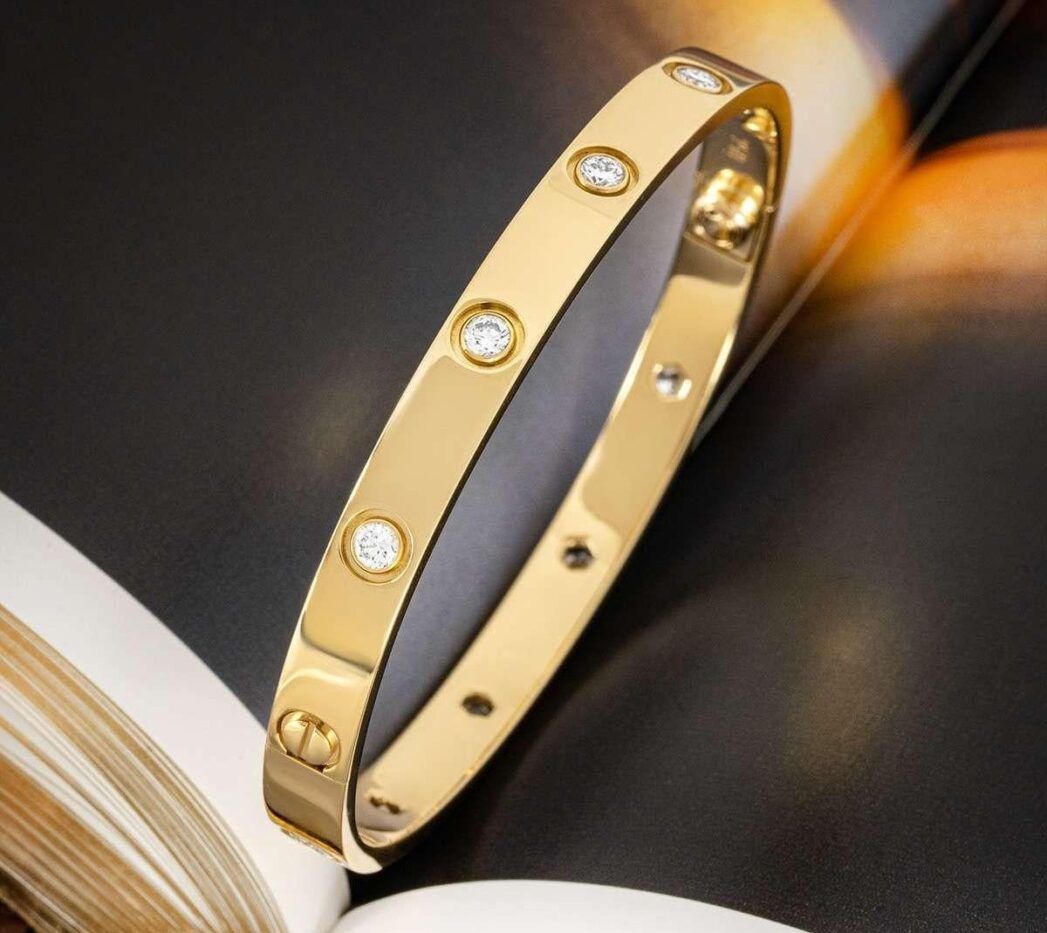
Poor Aldo. Although a sophisticated man-about-town in 1960s Manhattan, Aldo Cipullo had a heart — and somebody broke it. Late one night, alone with his sadness, imagination and tools, he created the prototype of what would become the Cartier Love bracelet. This unisex design (an idea that was completely new for the time) closed with a screw and could be removed only with a special screwdriver.
“Love symbols should suggest an everlasting quality,” Cipullo once explained. (This particular love symbol also suggests handcuffs and Renaissance chastity belts, but that’s another story.)
First released in 1969, the eternally chic design retails today for between $4,400 (for a small version) and $68,000 (for a pavé-diamond example). “Is the Cartier Love bracelet worth the cost?” has become a popular Google search.
Jewelry-industry consultant Anna Rasche has an answer to that. “An iconic piece from a heritage brand is going to hold its value better over time than an unsigned piece,” she says, adding as a cautionary note, “These are really hot on the secondary market right now — nobody needs to sell them for a low price. So, if you see one with a very low price, that should be a big red flag.”
What are other tip-offs as to whether you’re looking at a fake Cartier Love bracelet or a real one? Details below.
Check for Precious Metals
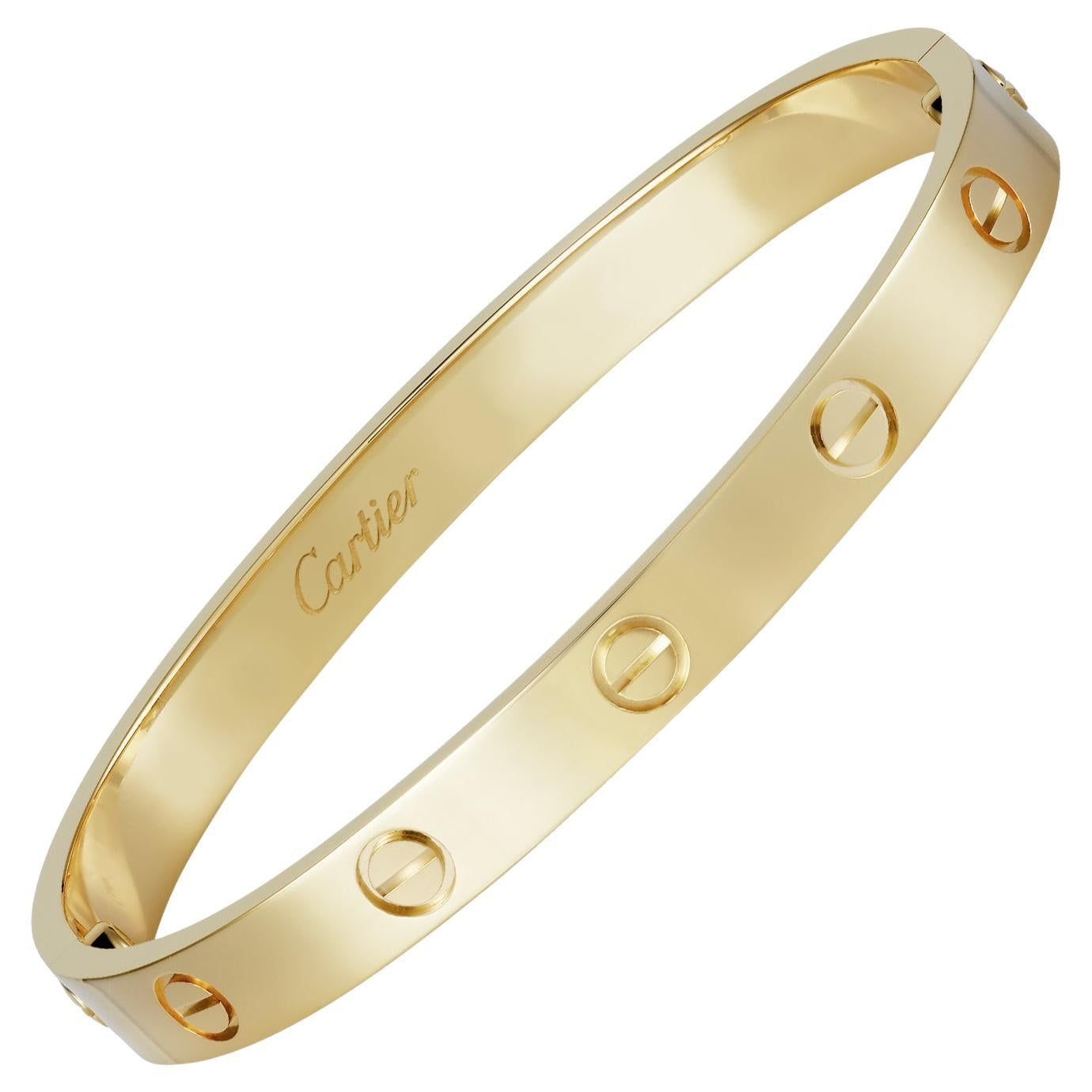
“With any piece of jewelry made by a heritage house, the first thing you want to look at is whether or not it’s made with the correct materials,” says Rasche. “That’s the hardest thing to really counterfeit because that’s what costs money.”
Cartier is known for using only precious metals. The house’s Love bracelets come in platinum and 18-karat yellow, white and rose gold. The inside of an 18-karat gold bracelet will be stamped with the number 750, meaning that the alloy is 75 percent gold. Platinum bracelets will be marked with 950, indicating that the bracelet is 95 percent platinum.
Have your eye on an example in sterling silver? Step away — it’s a fake Cartier Love bracelet. Found one that’s tarnishing? That, too, is a fake. Some counterfeits are made from base metals and plated with thin layers of precious ones. When in doubt, test the bracelet with a magnet — gold and platinum are not magnetic.
Look for the Hallmarks
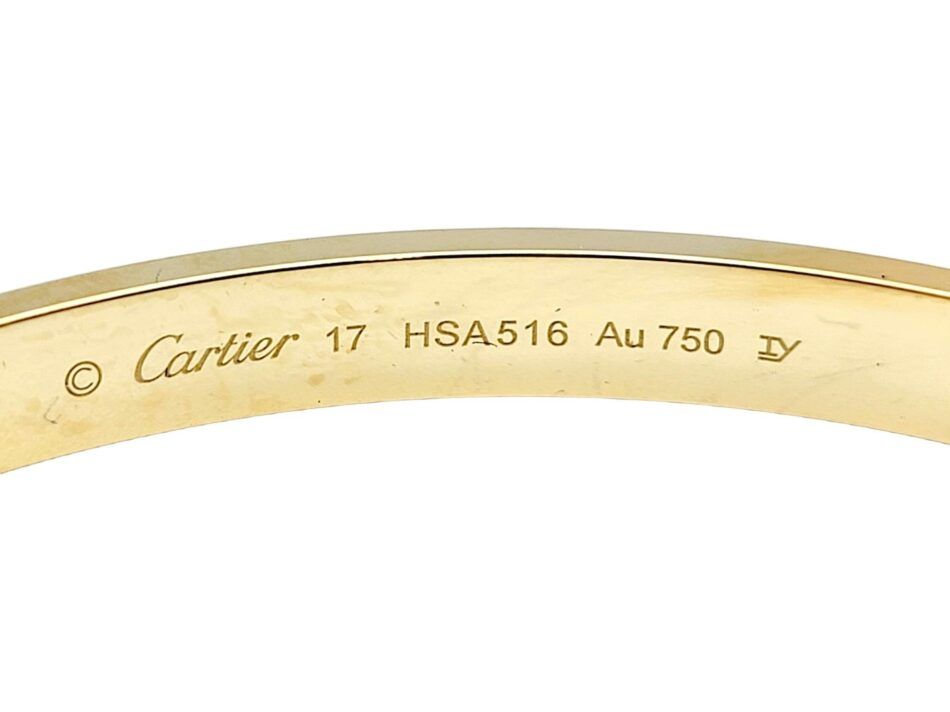
A genuine Love bracelet has the Cartier logo on the inside. In a fake one, the logo may appear on both the inside and the exterior and be sloppily executed, smudged or just too deep, wide, big or small. If you’re looking at a recent bracelet, compare the script and the stamp to a picture from the Cartier website.
Bear in mind, however, that “manufacturing standards at Cartier have changed over time,” says Rasche. For example, when Love bracelets were introduced, they didn’t have serial numbers — these were added in response to a surge of counterfeits in the 1970s. (Some sources estimate that half the bracelets from that era are fakes.)
From 1974 on, all Love bracelets have been stamped with a Cartier serial number. Each alphanumeric sequence is unique to a particular piece and can be found on the inside of the bracelet in one of three formats: one letter and five digits, two letters and four digits or three letters and three digits.
Other features to inspect closely are the spelling and font of the Cartier logo. The maison’s trademark cursive lettering is the only kind used to engrave the inside of the bracelet. To the right of the logo, each bracelet will also be stamped inside with numbers indicating its diameter in inches — 16, 17, 18, 19 or 20 — and the purity of the precious metal with which it’s made.
Review the bracelet’s inner surface to ensure that all these elements are present, clearly legible and flawlessly finished. Cartier will never accept changes to its hallmarks as part of a customer’s order, so if they are missing or differ from the description above, you’re looking at a fake Cartier Love bracelet.
Ask about Its Weight
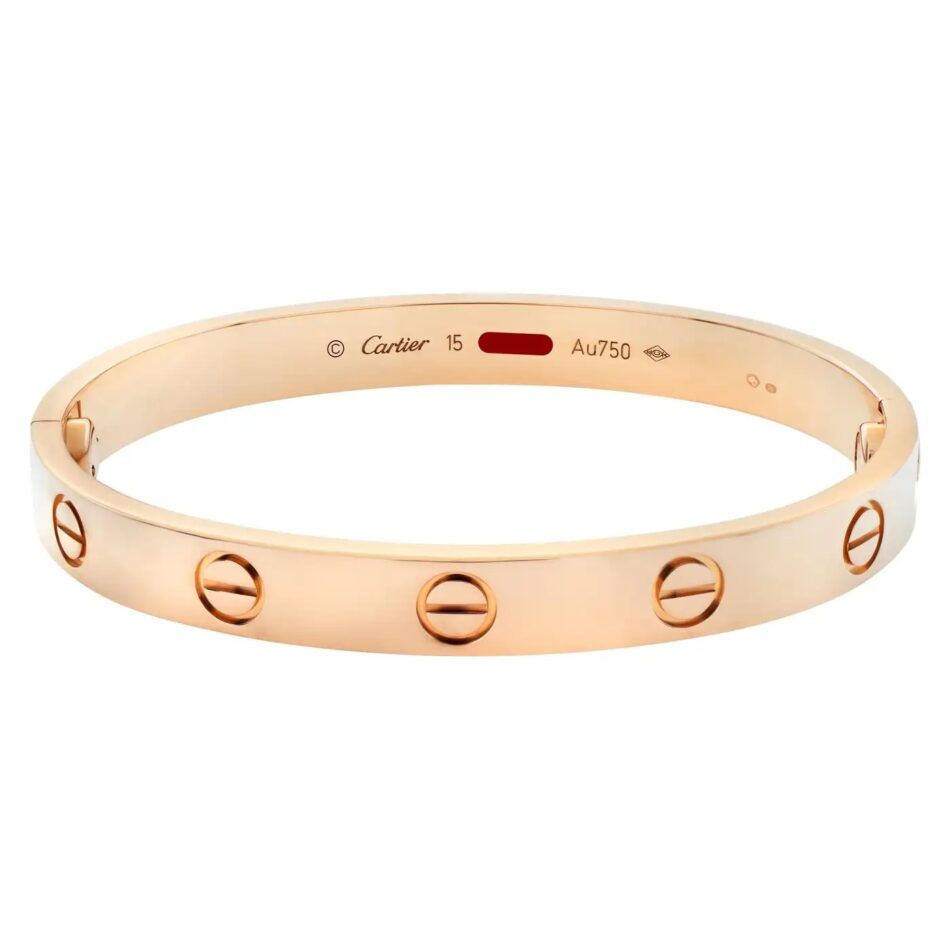
The weight of a genuine Cartier Love bracelet falls within a narrow range of 30 to 38 grams, depending on its size, design and the metal used. This consistency reflects the brand’s dedication to precise craftsmanship and to using only high-grade materials.
When examining a Cartier Love bracelet, request its exact weight from the seller or use a jewelry scale to measure it accurately yourself. This is the only way to ensure that the weight falls within the range of an authentic bracelet.
Deviations may indicate that the piece is a counterfeit made from inferior materials, such as silver, which are significantly lighter than gold or silver.
Pay Attention to the Screw Design
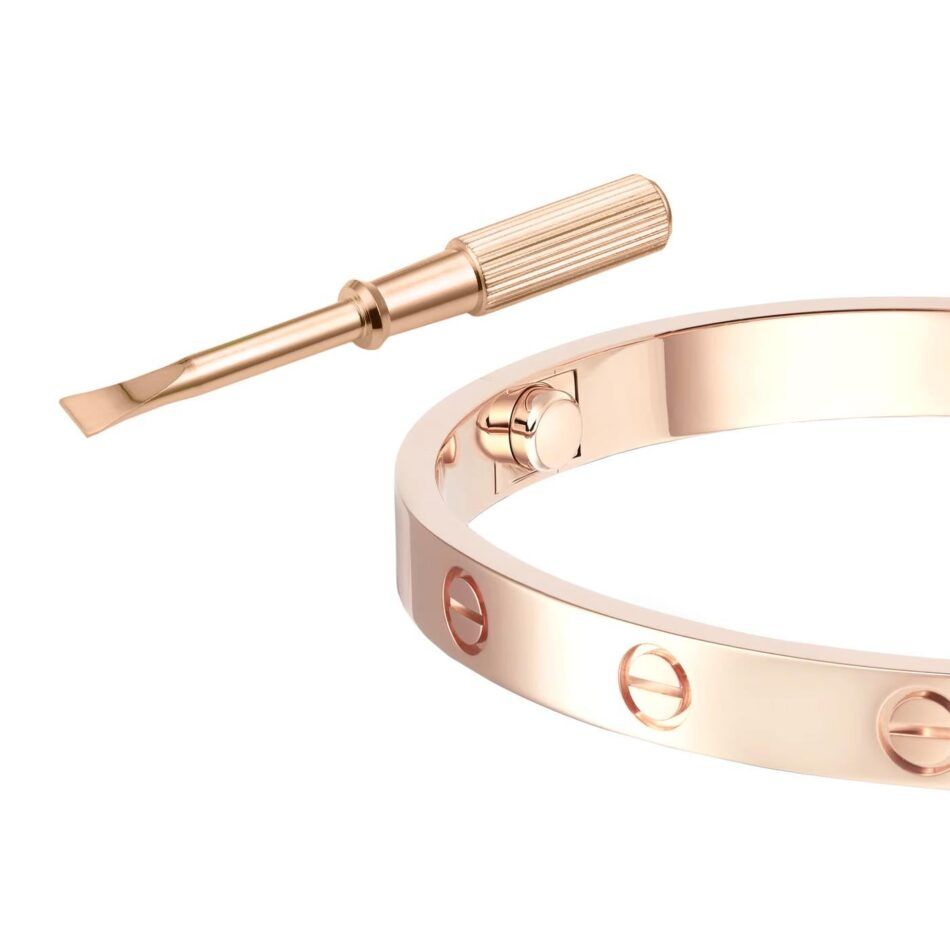
Pay close attention to the bracelet’s most distinctive feature: the screw design. On genuine bracelets, the screw design is stamped into the metal, uniform in shape, horizontally aligned and evenly spaced. Also, inspect the moveable screw that opens and closes the bracelet. “Older versions had screws that were fully removable, but people lost them,” Rasche says.
In response, Cartier redesigned the opening mechanism in 2011 so that the screw remains attached to the bracelet, even when opened. If the screw on a Love bracelet made post-2011 comes out entirely when you open it, it’s probably bogus. Ditto, if a vintage bracelet has a screw that stays attached.
Whether the bracelet you are considering is vintage or new, look for signs of the meticulous craftsmanship that goes into every Cartier jewel. Inspect the screw designs carefully. On a genuine Love bracelet, they will be almost flawless in appearance and aligned without gaps or irregularities.
Feel the Fit
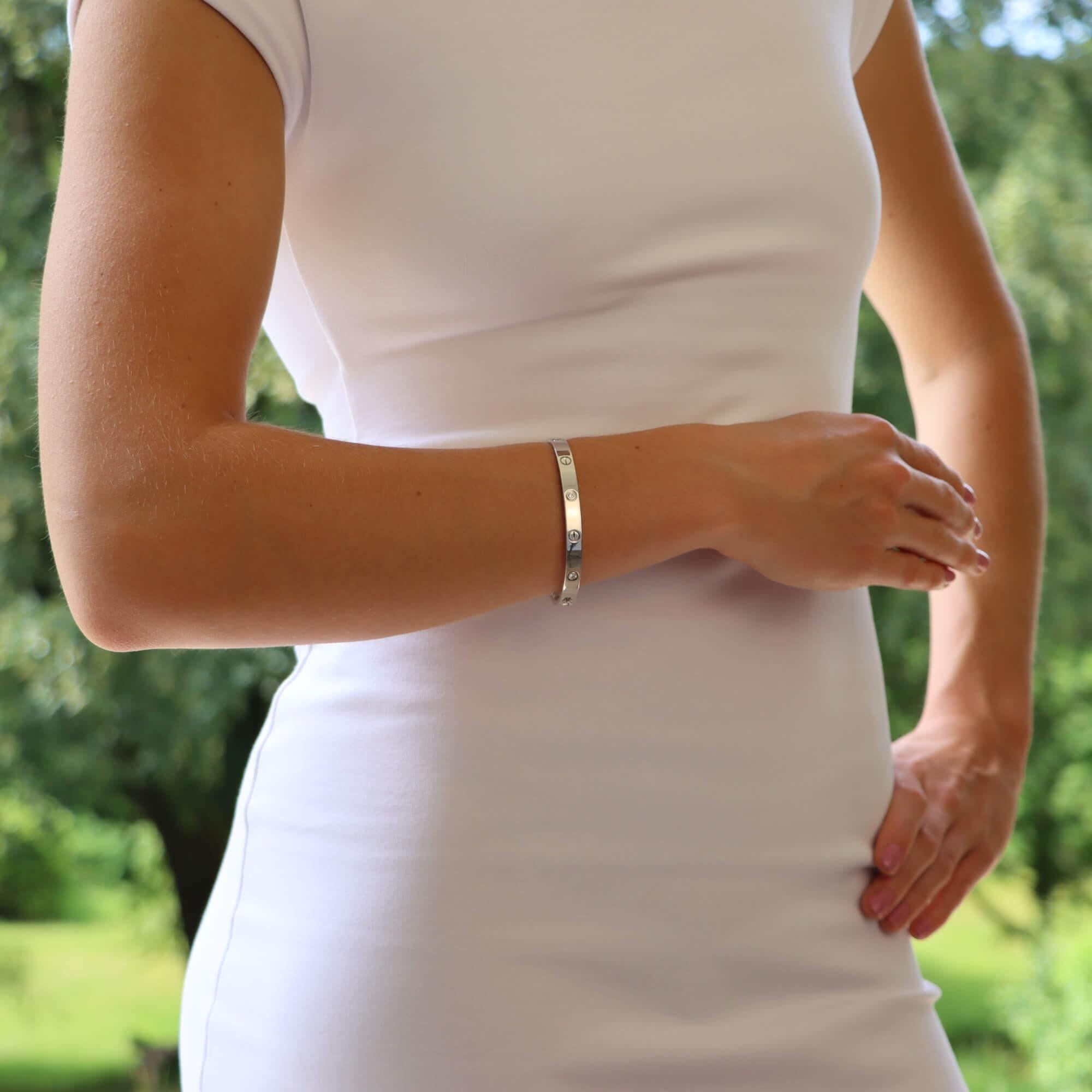
The Love bracelet’s fit is in harmony with its design and symbolism. According to Cartier, “Love is the expression of Cartier’s design vision. It presents the perfection of clean lines and precise proportions: an oval bracelet formed of two rigid arcs that must be screwed together.”
The two screws that hold these “rigid arcs” together are fastened with a specific screwdriver, and the wearer needs help (ideally, from a lover) to put the bracelet on and take it off. Thanks to the precision of Cartier’s jewelers, the fit is comfortable and close.
To find out which size is right for you, wrap a tape measure around your wrist. Add one centimeter to your measurement for a tight fit or two if you prefer a slightly looser one.
Inspect the Construction
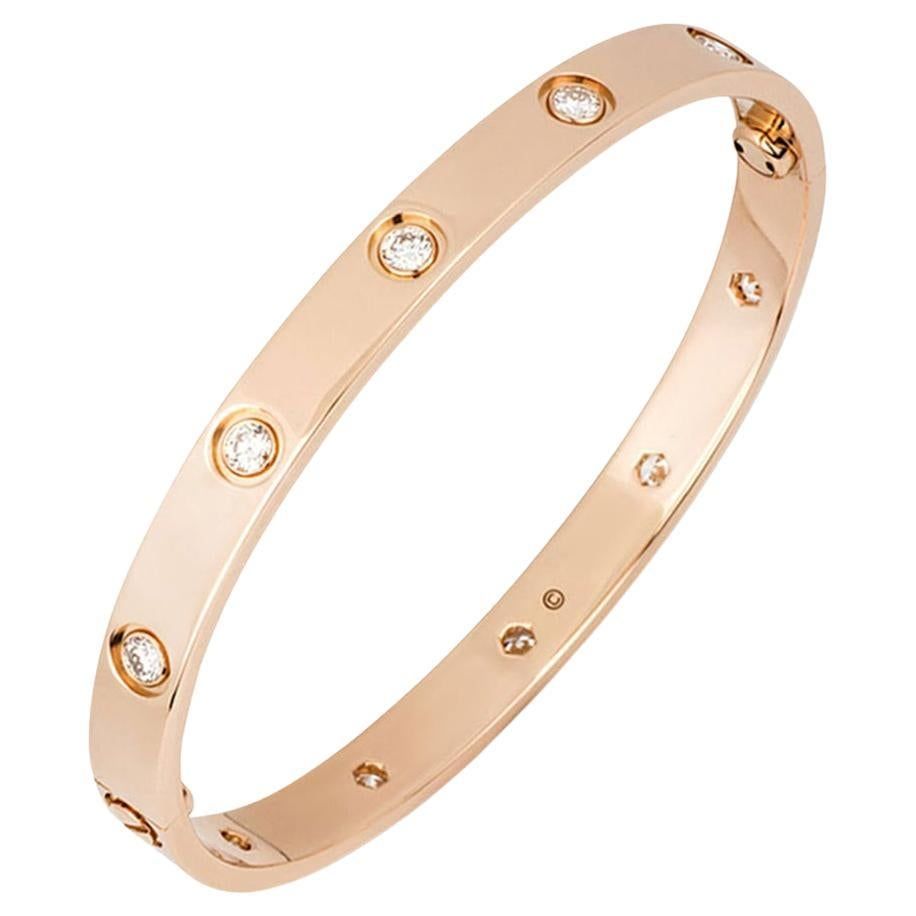
Consider the overall construction as well as the details of the Love bracelet you’re thinking of buying. The metal should be smooth and even, and the place where the two halves of the bracelet meet should be flush. Diamonds or other stones used should be visible on the inner as well as outer surface, while stamped screws should be visible only on the outside.
As mentioned above, in 2011, Cartier switched to a new locking mechanism in which the screw remains attached to the bracelet. This modification was accompanied by other alterations. For example, the screwhead now touches the bracelet seam, and on the inside, the closure has a U shape to hold the screw in place. The bracelet still unlocks with a special screwdriver, however. And a real one will open easily — if you have to struggle, it’s probably a knockoff.
Always do your research, know your size, and gather as much information as possible on the particular model of the bracelet you’re considering. If you see a design, size or gemstone you cannot locate on the official website, you might be looking at a fake Cartier Love bracelet.
It’s been more than half a century since Cipullo first conceived the Love bracelet, and although its design has remained essentially the same, some details have evolved. Your best bet is to buy from a trusted vendor familiar with the nuances of the various models since copies are so rampant that Cartier no longer authenticates these jewels.
